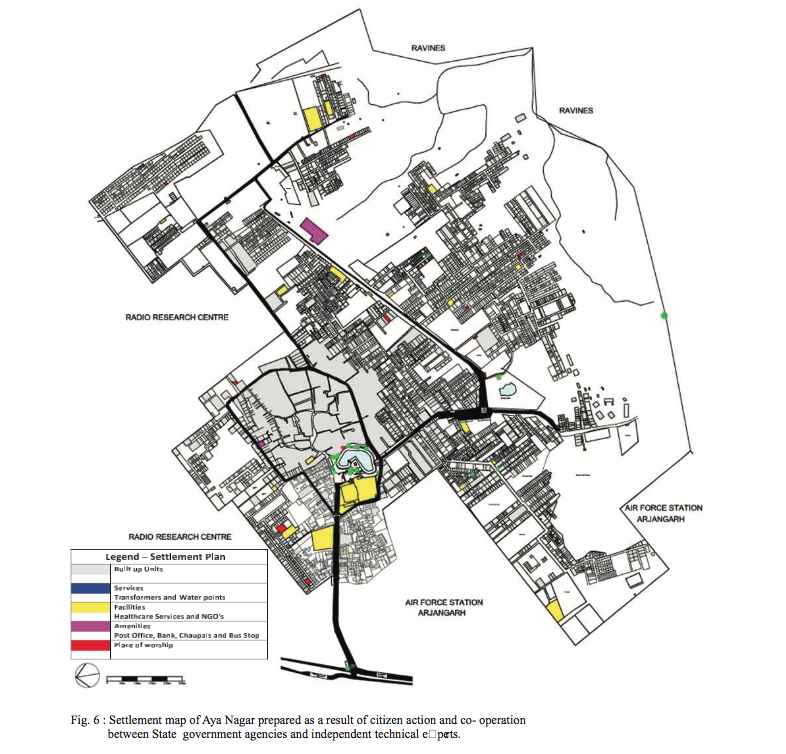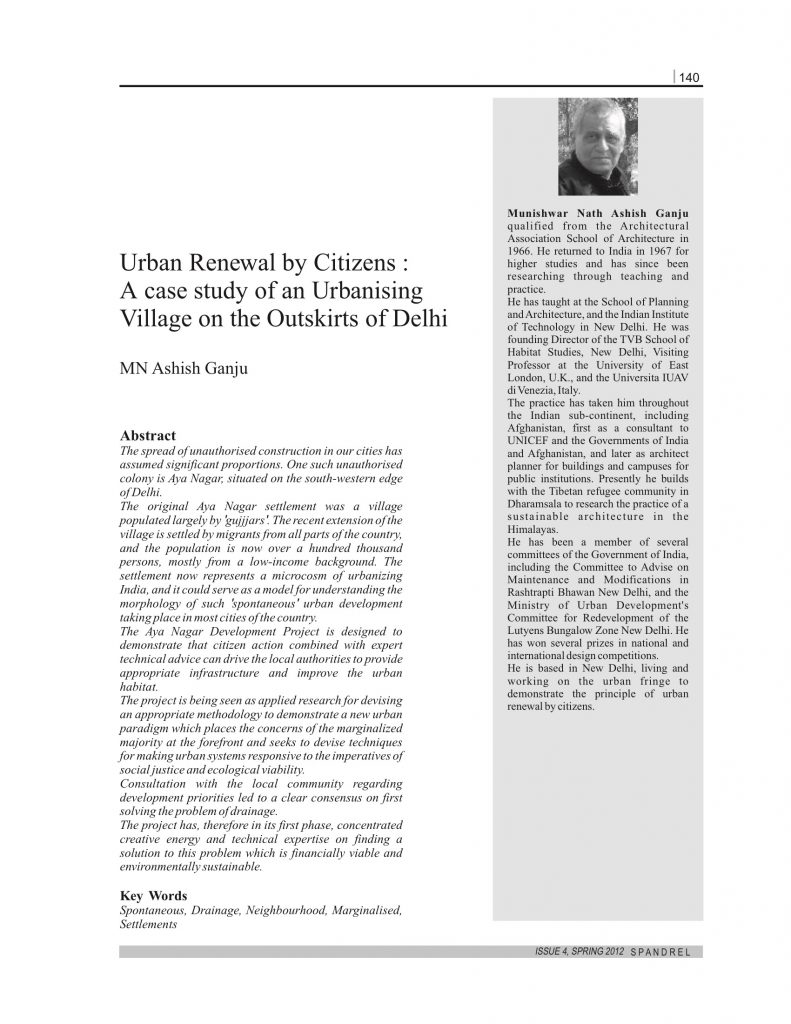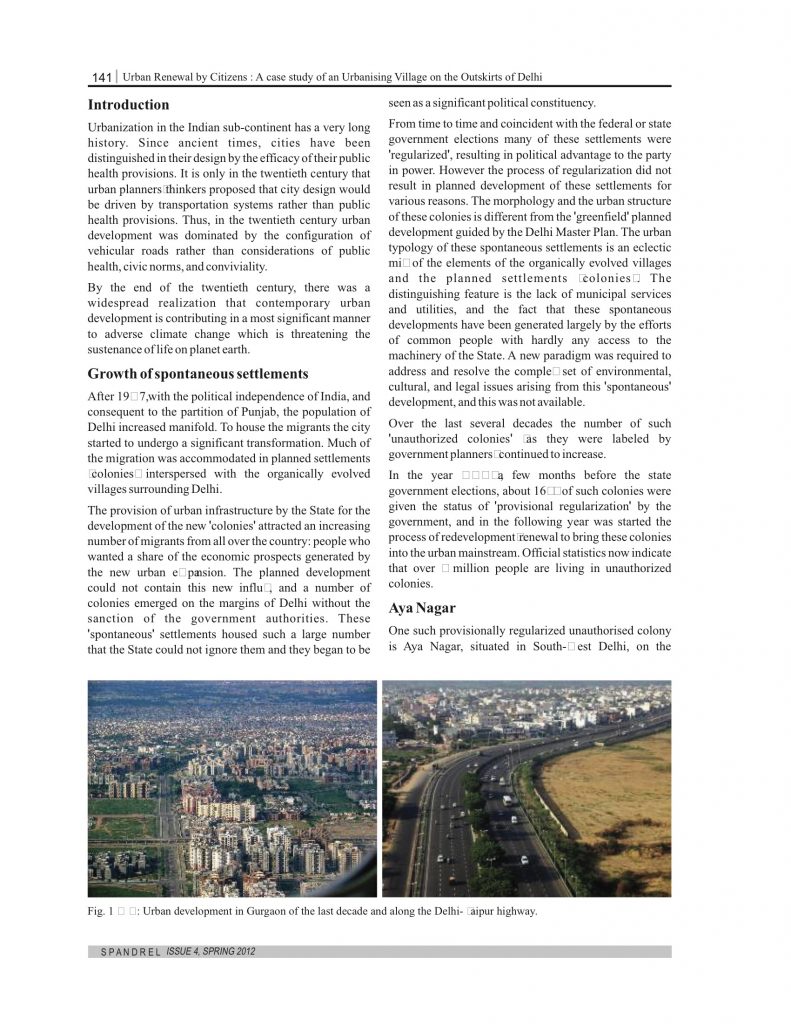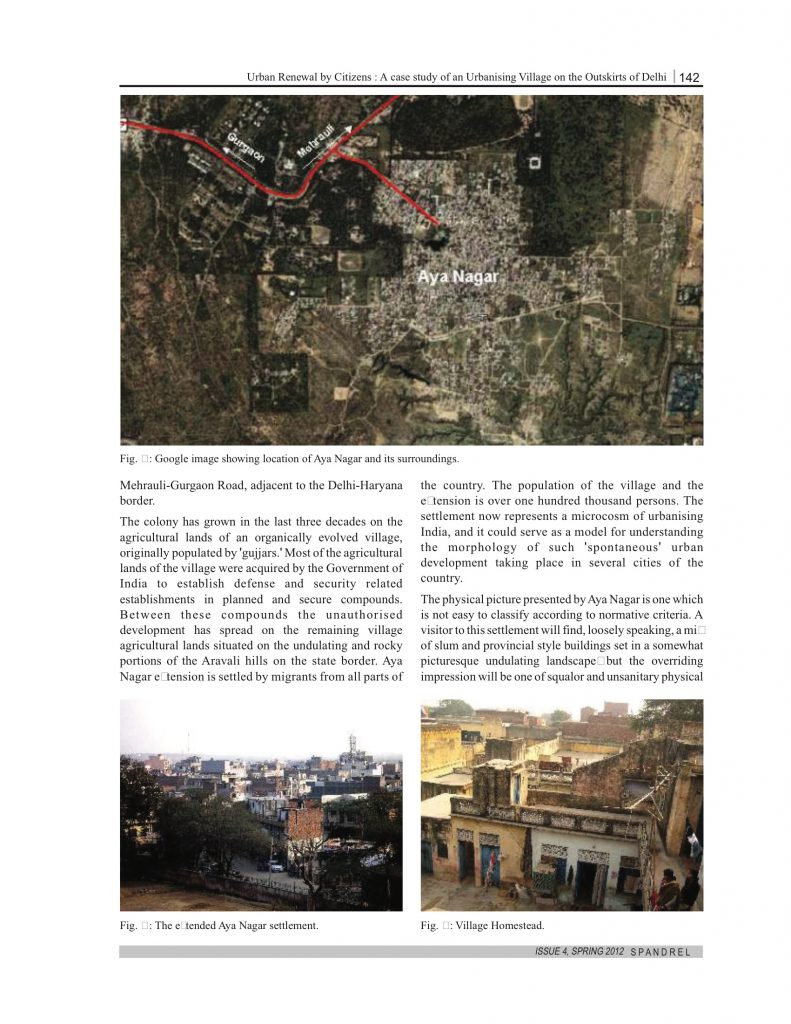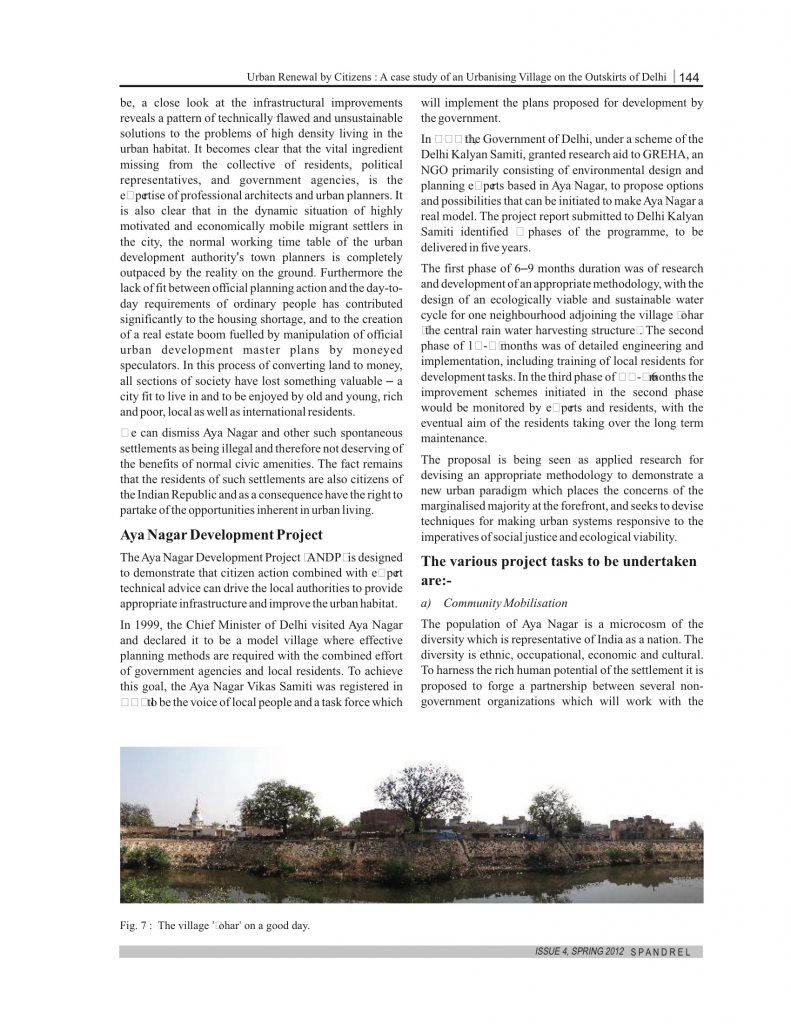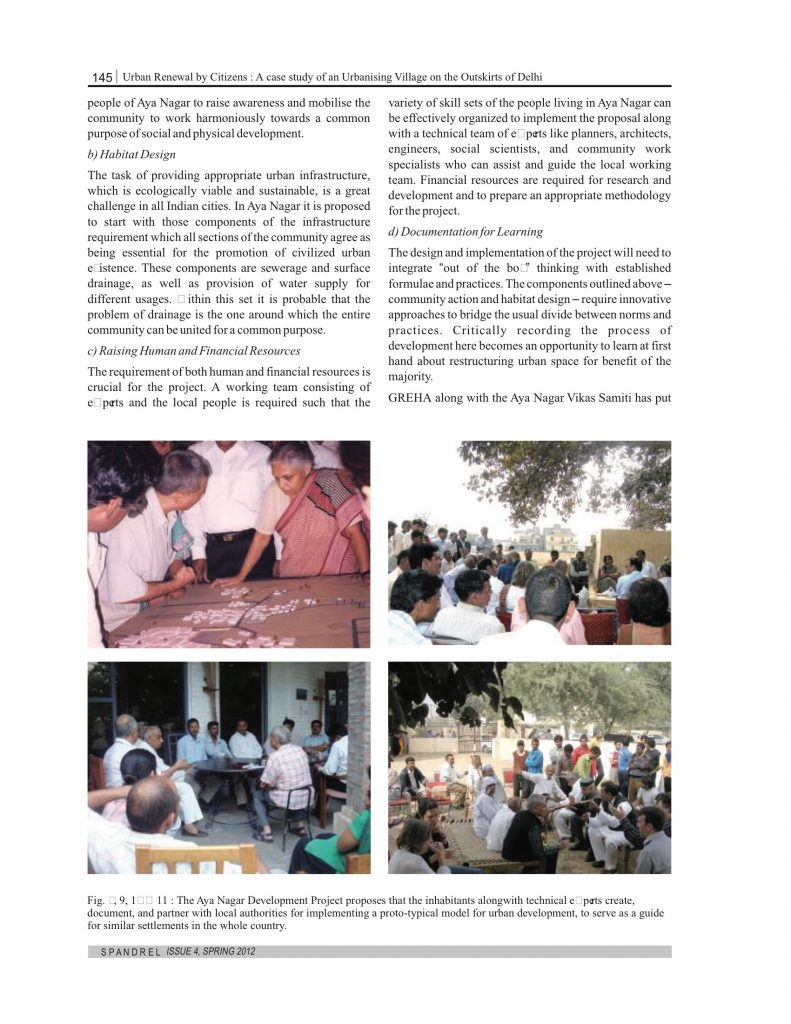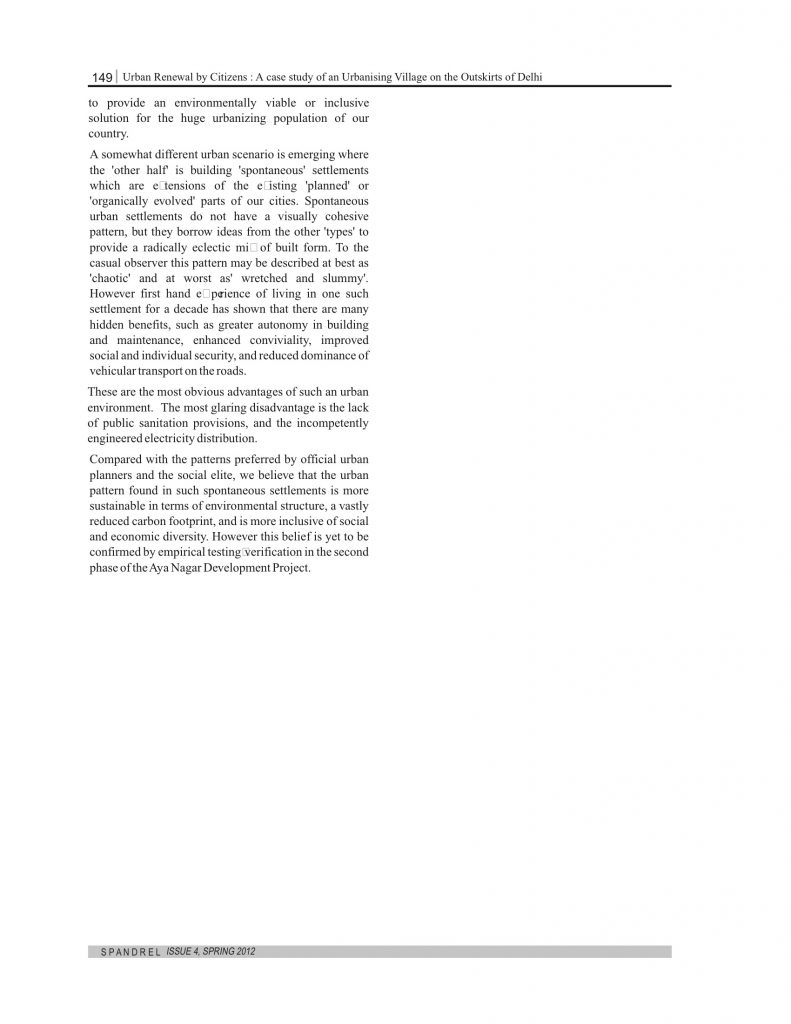Abstract
The spread of unauthorised construction in our cities has assumed significant proportions. One such unauthorised colony is Aya Nagar, situated on the southwestern edge of Delhi.
The original Aya Nagar settlement was a village populated largely by ‘gujjjars’. The recent extension of the village is settled by migrants from all parts of the country, and the population is now over a hundred thousand persons, mostly from a low-income background. The settlement now represents a microcosm of urbanizing India, and it could serve as a model for understanding the morphology of such ‘spontaneous’ urban development taking place in most cities of the country. The Aya Nagar Development Project is designed to demonstrate that citizen action combined with expert technical advice can drive the local authorities to provide appropriate infrastructure and improve the urban habitat. The project is being seen as applied research for devising an appropriate methodology to demonstrate a new urban paradigm which places the concerns of the marginalized majority at the forefront and seeks to devise techniques for making urban systems responsive to the imperatives of social justice and ecological viability. Consultation with the local community regarding development priorities led to a clear consensus on first solving the problem of drainage. The project has, therefore in its first phase, concentrated creative energy and technical expertise on finding a solution to this problem which is financially viable and environmentally sustainable.
Key Words: Spontaneous, Drainage, Neighbourhood, Marginalised, Settlements
